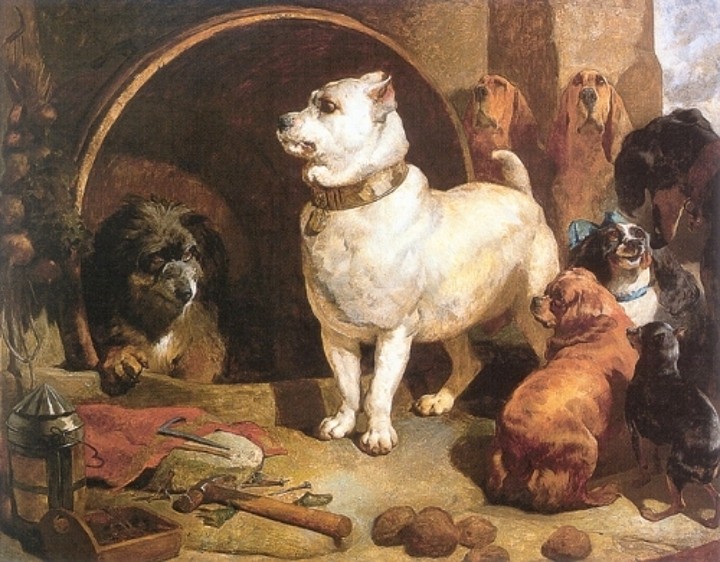
As the story goes, when Alexander the Great visited the Greek philosopher, Diogenes at the wine barrel in which he lives, and offered to fulfill a wish for him, Diogenes simply replied “Stand out of my light” (Read: Dude, you’re blocking my sun).
Diogenes was a piece of work. Known for a sharp tongue, he routinely insulted famous personages, lectured shoppers in the marketplace, and founded the school of cynicism (in fact, the word cynic is related to the Greek word for dog, though it’s unclear if cynicism is named for Diogenes’s affinity for canines, or for his teacher’s school which was called “The Temple of The White Dog”).
There wasn’t much Diogenes didn’t made fun of, but he apparently related to dogs and once described himself as a hound of the sort that men praise, but with whom no one will go hunting. When a group of wealthy Athenians at a banquet began throwing bones at Diogenes and called him a dog. Diogenes responded by lifting his leg and urinating on them. Legend says he died of an infected dog bite, and it’s said that the Corinthians erected to his memory a pillar (long disappeared) on which rested a dog carved of Parian marble.
Edwin Landseer’s depiction of the famous meeting between Alexander and Diogenes was given an allegorical twist by portraying the two giants of history as dogs. Alexander was the proud, strutting Bulldog surrounded by sniveling smaller dogs, while Diogenes, portrayed as a mutt living in an barrel, was utterly unimpressed with Alexander’s grandeur and pomposity. Two hounds in the background waiting solemnly for their master hold their heads up high as if the neighborhood around them isn’t good enough for them. It’s said that this famous piece of art influenced Walt Disney in the creation of the 1955 classic, Lady and the Tramp.
“Alexander and Diogenes” by Edwin Landseer, 1848
